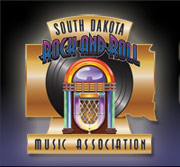

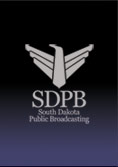

 |
 |
 |
 |
||

Share your Memories!
Join the SDPB Discussion
Rock and Roll Hall of
Fame Inductees
Interviews with Doug Lund:
Interview 1
Interview 2
Interview 3
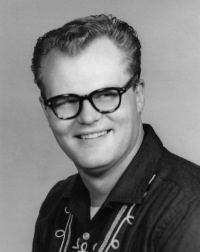 Little Phil
Little Phil
Fresh out of Nettleton College, Luverne, Minnestota native
Phil Severtson was encouraged by his hometown friend Bob Helgeson, to audition
for a DJ spot with a new radio station in Sioux Falls. "Little Phil" jointed
KIHO radio as one of the "original five" rock and roll DJ's in 1956. Being a
man of many voices, with his friendly persona and originality, Phil soon
became a favorite of KIHO listeners.
As with all the KIHO DJ's, "Little Phil" did numerous remotes and personal appearances throughout the KIHO listening area.
When KIHO was sold in 1960, Phil moved
to KELO radio in Sioux Falls and "Little Phil" became "Big Phil". Radio was
Phil's passion. Over his 18 year career, he worked at several regional radio
stations including WOW in Omaha, Nebraska, shortly before his passing in 1974.
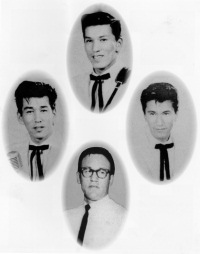 The Byrnes (Boys) Band
The Byrnes (Boys) Band
In the summer of 1956 the Byrnes family was living in Rosebud, SD. The oldest
of the four brothers, Russell, was a student at the Flandreau Indian School
and when he came home for the summer he told his brothers that he wanted to
start a band. Percy would play lead, Dean, who had just finished 8th
grade, would play drums, and Fred would join the group at a later time. The
Byrnes family had a long reputation for musicianship in the family.
Russ lined up jobs for the group and drive inns and dances, many of the dances being in central South Dakota. They also performed on the Saturday morning show "Stars of Tomorrow" and it was there that they officially took the name The Byrnes Boys. Ted Bordeoux, a friend, was an occasional member of the group around 1959 and cousin Calvin Ree played with them for a while in 1960. Brother Fred joined the group around 1963.
The family moved to San Jose, California where they performed throughout the Bay Area. They appeared on local TV variety shows and toured not only the West Coast but also Montana, Idaho, Minnesota and the Dakotas.
In the late 1970's the
group was traveling to an engagement when they were involved in a bad car
accident. Both Percy and Fred were seriously injured and it spelled the end
of the band. All of the brothers except Dean are deceased but he is living in
Pierre with his wife and continues to occasionally make music.
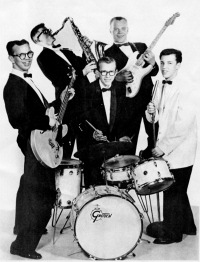 Gene Carroll and the Shades
G.
Carroll interview
Gene Carroll and the Shades
G.
Carroll interview
Gaylen Johnson, Bob Syverson and Gene
Okerlund were members of the Harold Johnson Orchestra out of Sisseton, SD.
Gaylen played the upright string bass and tuba, Bob played guitar and Gene
played trumpet. They played Old Time, Country-Western and "Modern" music.
But soon the three decided they wanted to play the music all the kids were
talking about, Rock and Roll. With Gaylen on bass, Bob playing guitar and
Gene playing the Wurlitzer electric piano, The Shades were formed. They were
joined by Odean Anderson on rhythm guitar and Larry Wattier on drums. The
year was 1959.
Initially, everyone wore sunglasses to coincide with the name, but after playing in a few poorly lit clubs, that proved impractical. Sax player, Dave Johnson, was soon added to the mix about the time that Wattier left the group. Anderson then switched to drums, later to be replaced by John Leppart, a legendary Fargo drummer. The guys played at ballrooms, armories, high school gyms and even on flatbed trailers. Crowds were very receptive and the band started to build up a following in northeast South Dakota.
Acclaimed booking agent Jimmy Thomas, who would also book Myron Lee and the Caddies and the Trashmen, helped the group expand their coverage area to include North Dakota, Minnesota, Nebraska and Iowa.
The Shades developed a unique sound that caught the attention of Midwestern teenagers as well as older fans. They drew big crowds and became very popular. The group recorded a 45 in 1959 in Sioux Falls on Bob Helgeson's M&L label. It featured a great instrumental, "Red Devil", on one side and "Do You Remember", featuring Gene's vocals on the other side.
The group disbanded in the early
1960's although Dave Johnson continued to perform in the Fargo area and played
with the Corvettes out of Minneapolis. He also worked with Howie Johnson,
original drummer of The Ventures, and other national acts. Gene Okerlund went
on to fame in professional wrestling as an announcer and has been involved in
the food business. Bob Syverson also was involved in music in the Fargo area
and played with The Corvettes. Odean Anderson died in the 1980's and Gaylen
Johnson's whereabouts are unknown. The Shades were not together for a long
time but they provided us with some great music.
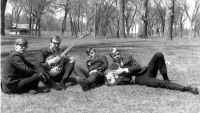 The Fabulous Jadesmen
B.
Halverson Interview
Reuben
Hanson Interview
The Fabulous Jadesmen
B.
Halverson Interview
Reuben
Hanson Interview
An 8th grade talent show
at Edison Junior High in 1958 proved to be the beginning of a musical career
for four teenagers. They called themselves The Jades and the band personnel
included Tim Moratzka, Butch Noteboom, Edgar Borgers and Wally Doolittle.
They continued to perfect their skills through high school, playing at area
balllrooms and dance halls including The Arkota Ballroom, The Dell Rapids
Pavilion, Shore Acres, The Roof Garden, The Cobblestone and many more.
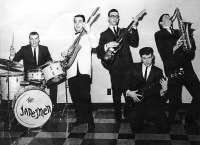
They went from singing four part vocals in junior high to Rock and Roll mixed with Rock-A-Billy. Dennis White was added to play tenor sax with Rich Stevenson on the drums. Bass guitarist Greg Weeg joined Tim and Butch on guitars. As their popularity exploded the now named Jadesmen traveled throughout Iowa, Minnesota and South Dakota. They were the opening acts for such stars as Jerry Lee Lewis, Duane Eddy, The Everly Brothers, Freddy Cannon and others.
After high school the band continued at Augustana College. There were some changes in the lineup but the guys settled in with Tim, Bruce Halverson on bass guitar, "Skip" Engle on keyboards and Reuben Hanson playing drums. They expanded their territory and traveled extensively throughout Mid-western America.
After their college days came to a
close the members spilt to pursue individual professional careers. But in
1998 they reunited and added Jon Tynjala on tenor sax and Nancy Halverson and
Kariann Gottesman on vocals. They recorded a CD in 2002 and added a second CD
in the spring of 2009. Several times a year the members reunite to entertain
audiences in the Midwest. These 2009 inductees prove you are never too old to
rock as they continue to make great music.
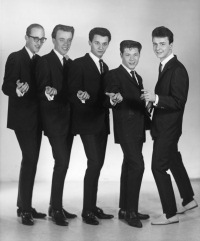 Myron
Lee and the Caddies
Myron
Lee and the Caddies
Myron was the first rock and roll
talent to catch the public's ear in South Dakota in the late 1950's and is
considered to be the "founding father" of Rock and Roll in his native state.
He organized a band make up of his Washington High S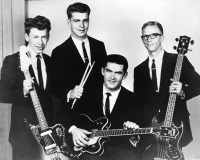 chool classmates, Jerry Haacke and Barry Andrews, along with Dick Robinson, a student at Augustana
College in Sioux Falls and Curtis Powell of Garretson. They called
themselves "The Caddies" and began to perform
locally, attracting full houses at such places as The Stardust Club and later
at the Cabana, in Sioux Falls. Their first out of town "gig" was at the
Tyndall Groveland Park Ballroom in 1958, which became the night that sparked
the demand for the Caddies throughout the upper Midwest.
chool classmates, Jerry Haacke and Barry Andrews, along with Dick Robinson, a student at Augustana
College in Sioux Falls and Curtis Powell of Garretson. They called
themselves "The Caddies" and began to perform
locally, attracting full houses at such places as The Stardust Club and later
at the Cabana, in Sioux Falls. Their first out of town "gig" was at the
Tyndall Groveland Park Ballroom in 1958, which became the night that sparked
the demand for the Caddies throughout the upper Midwest.
Through connections, Myron Lee and the
Caddies were able to travel the country and Canada, meeting, playing and
becoming friends with some of the top Rock and Roll recording artists of the
time, including Bobby Vee, Dion, Buddy
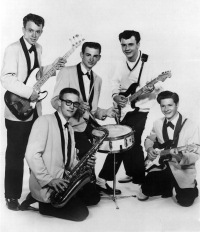 Knox, Conway Twitty and Roy Orbison.
His travels also included work on "Dick Clark's Caravan of Stars" tour in 1963
and again in 1965. Even though Myron had several personnel changes in
the group over the years, he always kept the crowds wanting more.
Knox, Conway Twitty and Roy Orbison.
His travels also included work on "Dick Clark's Caravan of Stars" tour in 1963
and again in 1965. Even though Myron had several personnel changes in
the group over the years, he always kept the crowds wanting more.
Over the next thirty-four years, Myron recorded thirteen single records and three albums. Many of those first recordings were written by Myron, including "Baby Sittin", which was also recorded by an English group known as Bobby Angelo and the Tuxedos. It became a big hit in Europe in 1961 and royalties for the song are still being sent to Myron. Myron released his biggest hit, "Peter Rabbit" on is own "M&L" label in 1962.
As he entered the 1970's and 80's, he
was content playing "gigs" in the Midwest here he was closer to home. These
included many street dances in the smaller communities where he attracted
hundreds and even in some cases, thousands of people at any one event. Myron
was induced into both, the Iowa Music Association in 2001 and, later, the
Minnesota Rock/Country Hall of Fame. Myron played his last song, hung up his
guitar in December 1992, and is enjoying his retirement.
Sherwin
Linton
When Sherwin Linton formed his first
band "The Rocketeers" in 1955-1956 in Watertown, he was no doubt South
Dakota's first Rock-A-Billy musician. In 1956 Sherwin and his band recorded
cover versions of "Maybelline", "Honey Don't", "Party Doll"
and several of Sherwin's originals.
Sherwin made his first radio
performance in 1950 on station KWAT in Watertown and by 1953 was singing on
the famous WNAX Missouri Valley Barn Dance in Yankton, SD. At age 16, Sherwin
had his own radio show in KWAT in Watertown. His charismatic stage presence
and very uniquely energetic rockin' style made him a special attraction at the
famous "Club Cabana" and in 1957 he fronted a small combo at a Sioux Falls
Rock-N-Roll Club "The Ditty Bop".
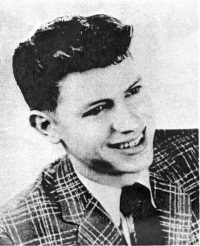
In early 1958 Sherwin moved to Minneapolis, MN and soon formed "The Fender Benders". This group toured with Carl Perkins, Gene Vincent, Buddy Knox, Wanda Jackson and Conway Twitty and rocked and rolled audiences from Minnesota to the West Coast through the mid 1960's. Sherwin and The Fender Benders cut several Rock-A-Billy records in the late 1950's and early 60's, and in 1966 he journeyed to Nashville and recorded "Cotton King", a song that catapulted him to the top of the Country Music charts. Sherwin has toured with everyone from Tex Ritter and Hank Snow to Lefty Frizzell and Roy Acuff. He signed with Acuff-Rose Publishing Company and Hickory Records resulting in numerous TV appearances and costs to coast tours.
In 1971, Sherwin's friend, Governor Richard Kneip, recognizing Sherwin's close ties to Johnny Cash, suggested he take his show inside the walls of the South Dakota State Penitentiary and recorded a live album entitled "Hello, I'm Not Johnny Cash". It became a best seller and drew praise from Cash himself. Sherwin became one of the top nominees for "Entertainer of the Year" and "Male Vocalist of the Year" by the Country Music Association, The Academy of Country Music and Music City News. In 1975 Sherwin's record of "When She Cries" won an award for single of the year. Subsequent hits included the 1986 novelty song, "Santa Got a DWI", an anti drunk driving song that hit the charts and became a Christmas favorite, selling over a million copies.
From the 60's, 70's and 80's to present, Sherwin has performed everywhere from the Grand Ole Opry at the Ryman Auditorium to major Las Vegas casinos as well as hundred of fairs and festivals from Canada to Texas. IN 2006, Sherwin was recognized by "Ripley's Believe It or Not" for 50 years on the road and never missing an engagement. He has been a perennial favorite at the South Dakota State Fair.
Sherwin has been induced into nine
Halls of Fame including his 2007 induction into the South Dakota Hall of Fame
in Chamberlain. In 2008 and 2009 Sherwin was voted the "Texas FAME
Entertainer of the Year". From 1956 to present, Sherwin is still singing the
songs of Elvis, Marty Robbins, Chuck Berry, Buddy Holly and Johnny Cash with
the same vitality that made them classics. With his own hits and originals
plus a variety of traditional country, folk, gospel and 50's Rock-A-Billy,
combined with this style as a raconteur, Sherwin can entertain audiences
everywhere. Nearing age 70 he continues to travel the road doing over 200
dates each year. His show is complimented by his wife Pam and his band The
Cotton Kings. As for the future, Sherwin feel s the best is yet to come and
thanks God for his many blessings.
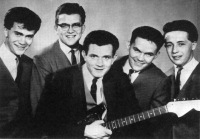 Gary Mule Deer and the Vaqueros
Gary Mule Deer and the Vaqueros
The Vaqueros got together in 1961 behind Gary
Miller from Spearfish where he was a student at Black Hills Teachers College.
Miller is now well known nationally as comedian and singer Gary Mule Deer,
since 1970. The rock band was put together and named themselves from the hit
song "Vaquero" by the Fireballs. The earliest members came out of the
group were Larry Bell and the Continentals. They were Doug Erickson, Jimmy
Anshutz and Jackie Robinson. Jimmy and Jackie were soon replaced with Duane
Stroller, a Nashville steel guitar and bass player who, just out of the Air
Force, came to Spearfish to attend Black Hills State Teacher's College. Denny
Fredrickson from Lead, SD joined the group along with Laurie Zapf of
Spearfish.
The Vaqueros played at the Franklin Hotel Gold Bar and the Old Style in Deadwood, the Lead Pavilion, Docs Place in Newcastle, WY, community halls in western SD and eastern WY, dances in Rapid City and the Rapid City Auditorium. They opened for The Champs, The Ventures, Buddy Holly's Crickets, and Gary U.S Bonds at the Spearfish Pavilion.
The Vaqueros had an original song, "Whitewash" that was a hit at their concerts but unfortunately never made it to vinyl. Some of Gary Mule Deer's best memories are getting up and singing "Summertime Blues" and "Mule Skinner Blues" with The Ventures, The Crickets, and Jerry Lee Lewis when they were in town. He also sang "Mule Skinner Blues" with Myron Lee and the Caddies whenever they played the Spearfish Pavilion.
Denny Fredrickson continues to play
guitar with several Black Hills duos and trios, and is better than ever. Gary
Mule Deer has gone on to appear often on The Late Night with David Letterman
and the Grand Ole Opry, as well as major theatres across the country,
including Carnegie Hall in January of 2009. Now scatted across the country,
all of The Vaqueros agree that their time playing together was one of the best
times of their lives. They are all very honored to be recognized in The South
Dakota Music Association's Rock and Roll Hall of Fame.
Tom Lammon founded The Mystics in the small community of Midland, SD but the story behind the beginning is very unusual. After hearing a Chet Atkins song on the radio, he knew he wanted to learn to play the guitar. Tom's mother played guitar and showed him some of the basic chords. An evangelist came to town and conducted services for two weeks, which Tom attended. The preacher played the guitar and gave Tom some pointers. But Tom credits Pete Fosheim as perhaps his biggest influence as he was responsible for helping Tom learn the Chet Atkins style.
For months Tom, Pete and a drummer worked The Central Bar once a week. Tom would pay them each with a ten dollar check. He discovered extra money in his checking account and found out Pete wasn't cashing his checks. Pete said, "If I start playing for money it would take away the enjoyment and it wouldn't be the same." Eventually Tom formed a new group called the Mystics. Many of their early jobs were in Pierre, where they paled for thirty dollars a night and included a 120 mile round trip drive. The group only had one mic, which they borrowed from a Catholic priest.
Tom attended college in Aberdeen and formed a new Mystics in 1962. Early members included Galen Arbogast on bass, Bob Ditmanson on drums and Chuck Robertson on rhythm guitar. He was able to recruit Bill Lebold and Hank Bowker, two local guitar players. As the band perfected their sound, they built up a loyal following in a five state area, grossing over $60,000 the first two years. That's a lot of money considering some nights they would play for less than $100. One summer they did 29 grueling one nighters in a row, often driving for hours after a show.
Drummer Steve Bergerson was added in the mid 60's and the Mystics worked with a group from England, the Hullaballoos, who had their own TV show. They also opened for the Every Brothers. The group received the National Ballroom Operators Award in the mid 60's. They also recorded numerous 45's in Minneapolis, including "Crying Over You", a regional number one song. One of Tim's favorite stores was when the Mystics played at Shorty's Club in Sioux Falls. As they were setting up, the bouncer came over and said, "When you start playing, if you are too loud, I will flash my flashlight once, if I have to flash it twice, you can start tearing down."
Original drummer, Bob Ditmanson,
lives in California; Steve Bergerson is an attorney in the Twin Cities, and
Bill Leopold passed away several years ago. Galen Arbogast lives in
Nebraska. Hank Bowker and Gordy Zens both live in Aberdeen and still play.
Tom has been playing country music for the past sixteen years. For five years
he traveled with the Joe and Rose Lee Maphis Show from Nashville. Tom and his
wife Joni are currently in a country band called Independence and play
throughout a three state region. The Mystics left their mark as one of the
most successful and talent bands to ever come out of South Dakota.
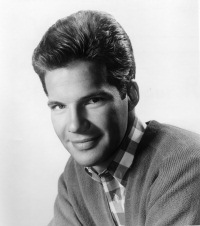 Bobby Vee
Interview
Bobby Vee
Interview
"Devil or Angel", "Rubber Ball", "Take Good Care of My Baby", "Run to Him", and "The Night Has A Thousand Eyes".These are a few of the recordings that made Bobby Vee one of the top recording artists of the 1960's.
Bobby was born in Fargo, ND, into a
musical family. At the age of 15 he joined his older brother's band, the
Shadows, and the Shadows became one of the top new bands in the area.
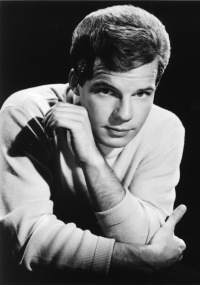
As a result of a tragic twist of fate, Bobby's story begins to take on a better sweet flavor. On February 3rd, 1959, Buddy Holly, Ritchie Valens, and The Big Bopper were killed in a plane crash leaving Clear Lake, Iowa. They were scheduled to perform the next night in Moorhead, MN. The decision was made to continue on with the show in Moorhead, and the promoters asked for local talent to help fill in. That was the night that Bobby Vee was introduced to the world.
On June 1, 1959, Bobby and the Shadows recorded a song on the Soma label called "Susie Baby" in Minneapolis. By summer's end, the song had reached number one on all the local stations in the upper mid-west. Bobby was drawing the interest of several major recording studios, and in the fall of '59 he and the Shadows signed with Liberty Records. They continued to play together until 1963. In the 30 plus years following 1959, Bobby would go on to place 38 songs in the Billboard Top 100 charts, 6 Gold singles, 14 Top 40 hits, and 2 Gold albums.
Besides touring the United States extensively, Bobby has toured Japan, Australia, and Europe. He has also toured the United Kingdom, and is usually a yearly visitor there. In a poll taken by UK Magazine, "The Beat Goes On", he was voted #1 "Best International Act". Billboard magazine once called him "one of the top ten most consistent chart makers ever".
Today, Bobby performs with his two
sons, Jeff and Tom, who are part of their own group, The Vees, and for the
last 26 years, Ar Stevens has been the lead guitar player and musical director
for Bobby. Between the US and Europe, Bobby performs about 100 dates a year.
He also has his own recording studio--Rockhouse Recording Studio-located
outside of St. Cloud, MN. When his is not touring or working on his own
music, he is involved with other musical projects at his studio.
Jack Shafer was a graduate of Washington High School in 1953. After a short stint with the Marine Corp Reserve, he sold magazines door to door from California to Kansas, returning to Sioux Falls by bus in March 1954. He went to work for Morrell's meat packing plant, saving his money to get him to Brown Institute radio school in Minneapolis. (Then it was known as American Institute of the Air).
While in Minneapolis, Jack's favorite "rock and roll" stations was WDGY Hot 100. He came back to Sioux Falls and went to work at KIHO, a Mutual Network affiliate, where he gave stations brakes for "Queen for a Day", "Bob and Ray", Canaries baseball and Notre Dame football.
He talked the station owner into doing a rock and roll show called the "Four O'Clock Rock", using the Bill Haley and the Comets hit for an intro and the rock and roll fans started sending the mail to the radio station. In the spring of 1955, KIHO was sold to a Minneapolis company which changed to format to Top 40, right up Jack's alley. It was a time when the music was changing from big band/orchestra to rock and roll. Elvis had arrived on the scene ad teenagers couldn't get enough of the new sound.
Lloyd Reiver, "Lucky Lloyd", was program director and their play list came from Billboard Magazine. The station hired Bob Helgeson "Helgie" from KSOO. Bob Helgeson became Jack's mentor. Phil Sievertson (Little Phil), Dan Buran (Dandy Dan) and Smilin' Jack became the KIHO Rock Jocks and became known as "Your Mayors of Music City".
They did sock hops, beauty contests and at one time, Jack tried to set a record in the Disc Jockey Marathon at Ace Hardware. He lasted 72 hours on the air straight! In the summers of 1958 and 1959, you could find "Smilin' Jack" doing remotes at the Barrell Drive Inn. Sometimes things got pretty hectic as the DJ's had to race form the studio outside of town to do a remote in town.
Smilin' Jack, then in his mid 20's, left KIHO in 1960. He was employed by the Sioux Falls Shopping News for seven years before returning to radio and television at KELO in Sioux Falls. Jack returned to the Shopping News in 1973 and retired in 2004. He now lives in Sioux Falls with his wife. If you had an opportunity to listen to Smilin' Jack on the radio, chances are that he put a smile on your face.
Bob Helgeson didn't start his career in radio but as a musician. He landed his first professional music gig with the Sy Sargent big band in Sioux Falls. That was followed by playing with Milt Askew's Dixie Rhythm Club and later he formed his own group, The Three Dads. After a short stint at the Beck Radio School in Minneapolis for two months, he accepted a radio job at KGWB in Goodland, KS playing country western music. After a short two weeks, Bob threw in the towel and headed back to Luverne, MN.
In 1948 KISD, 1230 on the dial, was born and Bob was back on the air. Two years later he got a call from broadcasting legend Ray Loftesness at KSOO where he spent the next seven years. One of Bob's fondest memories was doing remotes from the Arkota Ballroom where he interviewed many artists. Doing a remote at the Arkota was the beginning of a long friendship with Myron Lee. It has special significance because that is where he met his beautiful bride to be, Jeanne Gross. They were married on Valentines Day, 1953.
Bob received a call from KIHO in 1957 and was offered a job playing Top 40 Rock and Roll. This was something new for the big band and jazz enthusiast but with an adventurous spirit, he gave it a try. Bib spent two years with KIHO and was affectionately known as "KIHO Helge".
Helge got out of radio for two years, but in 1960 KELO in Sioux Falls called and he was back on the air playing Rock and Roll. In 1966 he received an offer from NSP to join their advertising department, which he did not. It proved to be a good career move as he was there until 1991 when he retired. Today Bob and his wife live in the Twin Cities area and enjoy their grandchildren. He may be grandpa Bob but we will always think of him as "KIHO Helge".
The year was 1946 and the station was KIHO, 1270 on the dial. They were one of the pioneer radio stations in Sioux Falls, owned by a man from Missouri. Rock and Roll wasn't even invented yet. Early DJ's included icons Wayne Pritchard and Danny Olson. In those days, programming included Canaries baseball, college football and a show called "Queen for a Day". Music was not the main format.
1957 brought a new owner and introduced Rock and Roll to area teenagers. KIHO was "the" station for rock music in the area and teens anxiously awaited each week to see what song was #1, the news "Pick Hit of the Week", and a list of "Up and Coming" records. The station also featured hourly news called "Live at 55".
KIHO used the slogan "Wide Awake Radio" and its DJ's were known as "Your Mayors of Music City". They included J.P. the D.J., Lucky Lloyd, Smilin' Jack, Red Rover and KIHO Helge. The transmitter and studio were located in a rural area outside of town. Sometimes a DJ would work the early morning shift, drive into Sioux Falls, sell some advertising, and doing an afternoon remote broadcast.
Sioux Falls had several radio stations in the 1950's but only one played that new music called Rock and Roll. Unfortunately, most good things come to an end, and KIHO was eventually sold to Bill Graham Ministries and became KNWC.
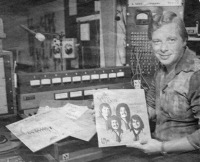 Bill
Van Dusen
Bill
Van Dusen
From 1970-1977, Bill Van Dusen helped bands make their
dreams com true.
He operated "UA Recording Studio", located in a small building near 37th
and Minnesota Avenue in Sioux Falls, but there was nothing small about this
business. Bands and artists came from all over the upper Midwest to
record 8 tracks, cassettes, 45's and albums.
Some of the groups included The Mystics, Sherwin Linton, Glass
Menagerie, The Apostles and Stan Gunn.
Recording was done seven days a week at almost every hour.
With the help of an engineer, Bill also produced many commercials for area businesses. This supplied a significant part of his income. Many high school groups, as well as religious groups also recorded there. In seven short years, UA Recording left a lasting impression on the South Dakota music scene.
You many also know Bill as the long time manager of the Mocamba Club as well as a weatherman on the local Sioux Falls TV stations over the years. Now retired, Bill and his wife Jean, make Sioux Falls their home.
Ken Mills began managing, booking and promoting bands in 1965 while he was a junior in high school. In the mid sixties, there were numerous bands coming out of the Sioux Falls high schools. For the next four and a half years hi s company, Ken Musical Enterprises, managed many of the local rock bands including Dale Gregory and the Shouters, Those of Us, The Trippers and the Dynamic Hursemen.
Ken promoted dances and shows across
the upper Midwest feat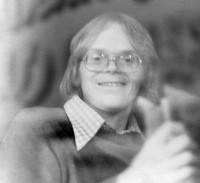 uring his own bands along with well known bands
including the Flippers, Stillroven, Blue Things, Spider and the Crabs,
Rumbles, Roarin Red Dogs, and Crow and the Mob. Venues included the Beresford
American Legion, Sioux Falls Coliseum Annex, Arkota Ballroom, Nordic Hall,
Plains Ballroom in Huron, Ruskin Park, the Salem Armory and many more.
uring his own bands along with well known bands
including the Flippers, Stillroven, Blue Things, Spider and the Crabs,
Rumbles, Roarin Red Dogs, and Crow and the Mob. Venues included the Beresford
American Legion, Sioux Falls Coliseum Annex, Arkota Ballroom, Nordic Hall,
Plains Ballroom in Huron, Ruskin Park, the Salem Armory and many more.
After promoting bands, Ken started working in radio. He worked at KISD, KLOH, KELO, KXRB and KLYX in the Sioux Falls area. He developed KSKY in the Black Hills. From there he moved up to WCCO in Minneapolis, KCSN in Los Angeles and the Transtar Radio Network.
Music and Ken Mills were synonymous in the 1960's. Whether he was booking bands, promoting or on the radio, Ken was a household name and he started his amazing career in high school. Most of the bands he managed and promoted would not have enjoyed the success they had without his guidance. Today Ken and his wife reside in Minneapolis where he specializes in syndicating NPR news and music programming.
The 40's, 50's and 60's were a magical
time in America for ballrooms. They appeared all over the country but no
place were they more plentiful than in the Midwest. Tom Arcer built his first
ballroom in the 1930's and became the king of ballroom operators in the USA.
The Val Air in Des Moines, Iowa may have been his first and most recognizable
but he also built many in Nebraska, South Dakota and Missouri.
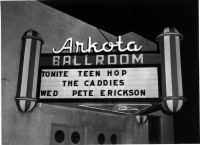
The Arkota in Sioux Falls was certainly the "jewel" of South Dakota ballrooms. It hosted orchestras, big bands and finally Rock and Roll. Some of the biggest names in the business played at the Arkota, with crowds sometimes exceeding one thousand patrons. It's where Myron Floren was introduced to Lawrence Welk. In the 50's, the Arkota featured "teen hops" on Thursday nights with big bands performing on the weekends.
South Dakota legend, Myron Lee has many fond memories from the Arkota. He claims his career really took off after he started playing the teen hops there in 1957 and was a regular performer for years to come. Some of the top acts Myron recalls seeing included Gene Vincent, Sonny James, Marty Robbins and Joey Dee. He also remembers how particular manager Mag Heansen was of the dance floor. When bands set up they had to walk around the shiny wooden floor so they wouldn't leave a mark.
Eventually this beautiful ballroom was acquired by the El Riad Shrine of Sioux Falls and has been refurbished to its former glory with the original floor still intact. Although it is no longer on the weekly circuit for bands, it is busy hosting receptions, parties and many special events. It is quite fitting the South Dakota Rock and Roll Music Association, in its first historical induction, is inducting the Arkota-a place where it all started.
The Spearfish City Park is home to the Spearfish Pavilion. Built in the 1920's, this grand old building was a hotspot for dances, with bebop and big bands in the 40's and 50's to Rock and Roll in the 50's and 60's. The wood frame structure hosted both touring musicians and local talent, drawing people from the Missouri River to the Bighorn Mountains. In the early years, local bands like Buddy Meredith and his KOTA Cowboys shared the stage with nationally known big bands and entertainers. One local band that played on a regular basis for about ten years was Henry Phillips and the Ambassadors.
In the late 1950's the music started to change with the emergence of Rock and Roll. From 1957 to 1964 the Pavilion hosted teen dances every Friday night. Local rockers included Gary Miller and the Vaqueros, Larry Bell and the Continentals and Myron Lee out of Sioux Falls. Some of the national acts included the Everly Brothers, Jerry Lee Lewis, The Ventures, The Crickets, Conway Twitty, The Ronettes, The Champs and Waylon Jennings. It wasn't unusual for a dance to draw several thousand people. People came from all over the Back Hills as well as Wyoming and Montana. Like most popular dance halls, the pavilions had its share of fights in the parking lot.
In the mid 1960's the Beatles hit America and that changed things. Crowds got smaller and places like the Pavilion suffered. By the mid 80's the Pavilion was starting to show its age and was deteriorating. Former big band leader, Wilbur Tretheway became mayor and led an effort to restore the Pavilion to its former glory. The mission was accomplished and today the Pavilion bears his name. Now the Pavilion is more popular than ever and hosts many different events. Its location in the city park next to beautiful Spearfish Creeks creates a beautiful setting. This historic building will serve the citizen of Spearfish and the surrounding area for years to come.
The Cavaliers first gig was August 20, 1966, on a flatbed trailer during Watermelon Days in Lake Preston. There were six members between the ages of 15 to 17-Greg Shelden, Lynn Larson, Dave Cecil, Ron Nelson, Dave Scheller and Mike Peterson. These six teenagers were all from the Lake Preston and Arlington area.
Practice sessions usually were at the Larson farm in their big garage. It was a good central location for everyone and there were no neighbors to disturb. Later on they also practiced at the Scheller garage, which was close to the Arlington swimming pool. Sometimes they would have an audience..it was like a free concert. Form these practice cession evolved a polished group of teenagers that went on to entertain eastern South Dakota audiences for the next three years.
From 1966-1969 they usually played every weekend, and played almost exclusively throughout South Dakota, especially in the eastern half of the state. One time they crossed into Minnesota to play at Lake Benton. High school homecoming dances and proms were often on their schedule, but quite a bit of their work was at dance halls and bars. Some of the towns they played in were: Arlington, Lake Preston, DeSmet, Madison, Brookings, Howard, Sioux Falls, Rapid City, Watertown, Huron, Mitchell, Ramona, Iroquois, Estelline, Lake Norden and Elkton.
In 2005 the band reunited and recorded a CD at the old Ford Garage in downtown Lake Preston. It contains thirteen rockin oldies from the past. They now get together at least twice a year to play. We thank them for their willingness to be our house band for the first annual South Dakota Music Association Rock and Roll Hall of Fame.